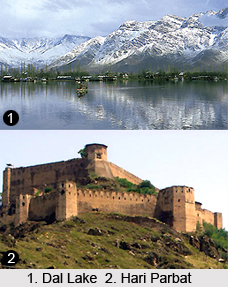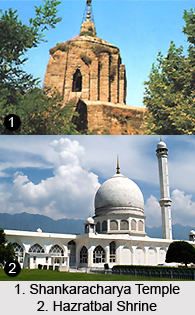 Badami Bagh is a cantonment town situated in Jammu and Kashmir. It is the most populous district in the state of Jammu and Kashmir. This district harbours the summer capital of Jammu and Kashmir, which is Srinagar (the capital shifts from Srinagar to Jammu city in the winter season). Srinagar is the largest city in this district.
Badami Bagh is a cantonment town situated in Jammu and Kashmir. It is the most populous district in the state of Jammu and Kashmir. This district harbours the summer capital of Jammu and Kashmir, which is Srinagar (the capital shifts from Srinagar to Jammu city in the winter season). Srinagar is the largest city in this district.
Location of Badami Bagh
It is located in the Srinagar district in the state of Jammu and Kashmir in India. The Srinagar district is located almost at the centre of the Kashmir valley. Badami Bagh is positioned at 34.07 Degree N 74.85 Degree E. It has an average elevation of 1727 metres.
Demographics of Badami Bagh
As per the 2001 India census, the population of Badami Bagh is 13,477. Males make up 53% of the population and females constitute 47%. Badami Bagh has a mean literacy rate of 71%, higher than the countrywide mean of 59.5%. 58% of the males and 42% of the females are literate. Children below six years of age constitute six percent of the population.
Tourism of Badami Bagh
Badami Bagh has the beautiful Dal Lake that is a renowned tourist spot. The places of worship to be found in Srinagar are the Jama Masjid (one of the earliest mosques in Kashmir), the Kheer bhawani, the Hazratbal Shrine, the Hari Parbat, the Zestha, the Shah-i-Hamadan Mosque and the Shankaracharya Temple, which is most probably the oldest place of worship in Kashmir.
 The Hazratbal Shrine is a place of worship of the Muslims which has a relic considered by several Muslims of Kashmir to be a hair (Moi-e-Muqqadas, meaning "the sacred hair") of the prophet Muhammad. The shrine is located on the left bank of the Dal Lake and is regarded as the most hallowed Muslim shrine in Kashmir. The shrine is known by various names. Some of them are Assar-e-Sharief, Hazrathbal, madinat-us-Sani, or just Dargah Sharief.
The Hazratbal Shrine is a place of worship of the Muslims which has a relic considered by several Muslims of Kashmir to be a hair (Moi-e-Muqqadas, meaning "the sacred hair") of the prophet Muhammad. The shrine is located on the left bank of the Dal Lake and is regarded as the most hallowed Muslim shrine in Kashmir. The shrine is known by various names. Some of them are Assar-e-Sharief, Hazrathbal, madinat-us-Sani, or just Dargah Sharief.
The shrine of Kheer Bhawani is located at a distance of 14 miles to the east of Srinagar against the picturesque natural scenery near the village of Tula Mula. This temple is positioned in the centre of a spring, surrounding which there is a vast area where smooth and beautiful stones are scattered all round. The temple campus is also home to huge and old chinar trees under the shade of which the pilgrims sit or sleep on mats of grass. The colour of the spring changes from time to time. While most of the colours do not have any specific implication, the colour black is taken as a signal for future ominous events in Kashmir.
The temple of Kheer Bhawani is also referred to in Abu-i-Fazal`s book Aini-Akbariin. Swami Rama Tirtha and Swami Vivekananda also came to visit this place to have a "darshan". Hari Parbat is located at the border of Srinagar city. It is an ancient as well as one of the consecrated places of Kashmir. It is dedicated to Mahashakti or the Divine Mother Jagatamba Sharika Bhagwati, also recognized as Maha Tripursundhari or Rajrajeshwari. The eighteen-armed goddess Sharika is considered to be the Presiding Deity of the city of Srinagar.



















